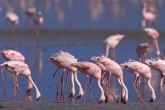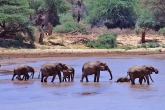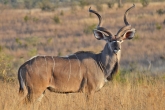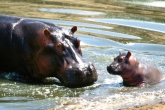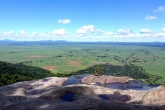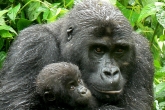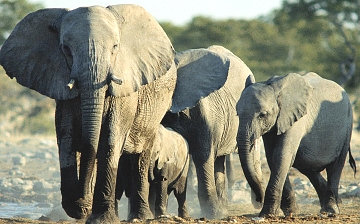Tarangire National Park Tanzania 572
Tarangire National Park, one of the hidden jewels of Tanzania. This park measures 2,600 sq km?s and boasts a concentration of wildlife second only to Ngorongoro Crater. It features an impressive amount and array of birdlife and plant life.
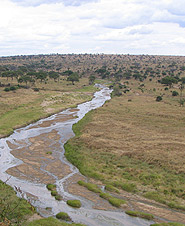
Tarangire River
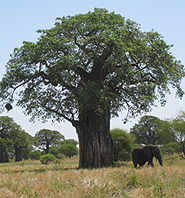
Baobab trees in Tarangire
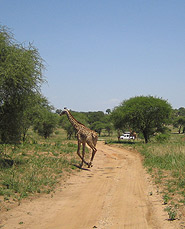
Giraffe at the park
The park offers views of grass and floodplains with impressive baobab and flat topped acacia trees scattered throughout. During the dry season the park may look quite ordinary, but activities continue even more earnestly due to the now increased competition.
Many of the animals leave the area of the Tarangire River at the beginning of the short rainy season (October/November) as water may be found elsewhere in the park, with less chance of predators homing in for a meal. The second "migration" occurs at the beginning of the rainy season in March.
The animals disperse into Maasailand, which covers about 20,500 sq kms. When the Maasai steppe begins to dry up, around about beginning of June, the animals return to the squalors of the Tarangire River. During all this action, the resident animals of Tarangire, amongst others, waterbuck, impala, dikdiks, giraffe and elephant, stay behind at patiently wait for the rains. Vast herd of elephant can be found in the park at any time of the year and are a spectacular, yet sometimes scary sight. The best time to visit the park is from July to December, when the vegetation is greener, and there is ample wildlife.
Certain sections of the park have relentless tsetse flies which will force you to keep your windows shut, and during the rainy season, your sense of adventure will materialise when (on the odd occasion) your vehicle may get stuck in black cotton soil. This is not something to fret about, as the driver guides (along with the help of sometimes eager visitors other drivers) dig the car out.
The swamps, tinged green year round, are the focus for 550 bird varieties, the most breeding species in one habitat anywhere in the world.
On drier ground you find the Kori bustard, the heaviest flying bird; the stocking-thighed ostrich, the world's largest bird; and small parties of ground hornbills blustering like turkeys.
More ardent bird-lovers might keep an eye open for screeching flocks of the dazzlingly colorful yellow-collared lovebird, and the somewhat drabber rufous-tailed weaver and ashy starling - all endemic to the dry savannah of north-central Tanzania.
Disused termite mounds are often frequented by colonies of the endearing dwarf mongoose, and pairs of red-and-yellow barbet, which draw attention to themselves by their loud, clockwork-like duetting.
Tarangire's pythons climb trees, as do its lions and leopards, lounging in the branches where the fruit of the sausage tree disguises the twitch of a tail.
Summary, Tarangire National Park
Size: 2,600 sq km (1,005 sq miles).
Location: 118 km (75 miles) southwest of Arusha.
Getting there
- Easy drive from Arusha or Lake Manyara following a surfaced road to within 7km (four miles) of the main entrance gate; can continue on to Ngorongoro Crater and the Serengeti.
- Charter flights from Arusha and the Serengeti.
What to do
Guided walking safaris.
Day trips to Maasai and Barabaig villages, as well as to the hundreds of ancient rock paintings in the vicinity of Kolo on the Dodoma Road.
When to go
Year round but dry season (June - September) for sheer numbers of animals.
Safaris
12 Days Kenya Tanzania Extended Safari
3 Days Mountain Gorilla Safari
1 - 4 Days Short Safaris
12 Days Mountain Gorrilas Trakings
5 Days - Manyara, Ngorongoro and Serengeti National Park
6 Days Tanzania Camping Safari
14 Days Tanzania Classic Safari
7 Days Samburu, Aberdares, Lake Nakuru and Maasai Mara
8 Days Uganda and Rwanda Gorilla Tracking
10 Days Kenya, Sambura, Mt. Kenya, Lake Nakuru, Masaai Mara and Amboseli

 German
German Spanish
Spanish







